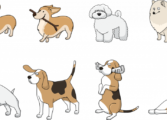Hamster Tube: Exploring the Fascinating World of Hamster Tubes

Introduction
Hamsters are beloved pets that require a stimulating environment to thrive. One essential component of their habitat is the hamster tube, a versatile and interactive accessory that provides both exercise and enrichment. In this comprehensive article, we delve into the world of hamster tubes, exploring their various types, popularity, quantitative measurements, differences, and historical pros and cons. Join us on this exciting journey as we unravel the mysteries of hamster tubes and reveal the secrets that make them essential for any hamster owner.
A Thorough Overview of Hamster Tubes

Hamster tubes are tunnel-like structures designed to mimic the natural burrowing instincts of hamsters. These tubes come in a variety of shapes, sizes, and materials, allowing pet owners to create customized environments based on their hamster’s needs and preferences. By creating a network of interconnected tunnels, hamster tubes not only offer a fun and engaging space for the hamster but also serve as a means of transportation between different areas of the habitat.
Types and Popularity of Hamster Tubes
There are several types of hamster tubes available in the market, each with its own unique features. Some popular options include straight tubes, curved tubes, T-junction tubes, and modular tube systems. Straight tubes are simple and suitable for beginners, while curved tubes add an exciting twist to the hamster’s exploration. T-junction tubes serve as meeting points between different tunnels, enhancing the complexity of the entire tube system. Modular tube systems allow for endless customization possibilities, enabling owners to create intricate tube networks.
Quantitative Measurements of Hamster Tubes
To ensure optimal comfort and safety for hamsters, there are certain quantitative measurements to consider when purchasing hamster tubes. The diameter of the tubes should be large enough to accommodate the hamster’s size, allowing it to move through effortlessly. Ideally, a diameter of at least 2 inches (5cm) is recommended. Additionally, the length of the tubes should be adequate to provide ample space for the hamster to explore and exercise. A minimum length of 8 inches (20cm) per tube section is suggested to ensure the hamster’s comfort and prevent any feelings of confinement.
Differences between Hamster Tubes
Hamster tubes vary not only in their shapes and sizes but also in the materials they are made of. Common materials include plastic, clear acrylic, and even cardboard. The choice of material may depend on factors such as budget, durability, and aesthetic preferences. Plastic tubes are affordable and durable, while clear acrylic tubes offer the advantage of visibility, allowing owners to observe their hamster’s activities. Cardboard tubes, on the other hand, provide a more natural and biodegradable option, although they may not be as long-lasting as their plastic counterparts.
Historical Perspectives: Pros and Cons of Different Hamster Tubes
Over the years, hamster tubes have undergone significant developments, resulting in both advantages and disadvantages. Earlier versions of hamster tubes were often rigid and inflexible, making them challenging to assemble and customize. However, modern advancements have made hamster tubes more user-friendly, with the introduction of modular systems and easy-to-connect options. On the downside, some hamster tubes made of plastic or acrylic may become brittle over time, leading to potential breakages. Therefore, it is crucial to consider the durability and overall quality of the tubes before making a purchase.
Conclusion
Hamster tubes play a vital role in providing a stimulating and enriching environment for pet hamsters. They offer endless possibilities for customization, allowing owners to create intricate tunnel networks that cater to the hamster’s innate burrowing instincts. By understanding the various types, quantitative measurements, differences, and historical pros and cons of hamster tubes, owners can make informed decisions when selecting the most suitable options for their furry companions. Whether it’s a straight tube, a curved one, or a modular system, hamster tubes are undoubtedly a must-have accessory for any hamster habitat.
References:
– ”The Benefits of Tube Systems for Hamsters” by Hamster Hideout
– ”Choosing the Right Hamster Tube for Your Pet” by The Hamster House
















































